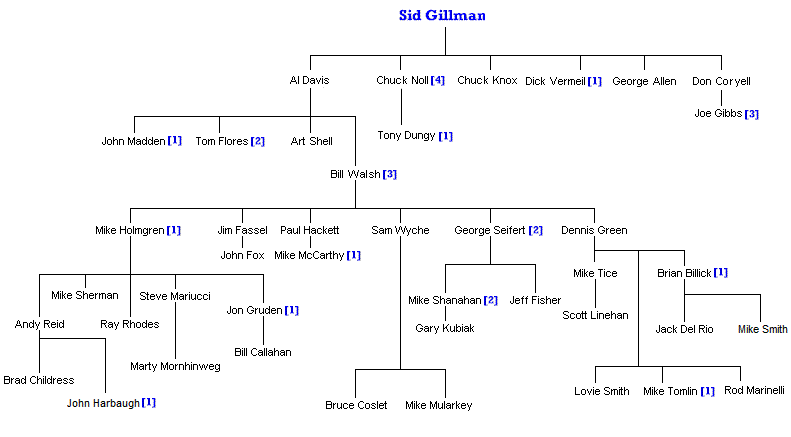|
The American Football League
fielded teams from
1960 through 1969. Through its many
innovations on the field and in sports
management and broadcasting, as well as its
influence on the expansion of all of Pro
Football to new U. S. markets, the AFL was the
true genesis of Pro Football as it is known
today. |
|
I want to set the record straight. To do so, I'll cite the common canards against the AFL, and explain why I believe they are full of holes. The claims were made not only by the NFL and its hide-bound owners such as George Halas and Wellington Mara, but by sportswriters from cities with NFL teams, represented by men like William N. Wallace of the New York Times; and national writers like Sports Illustrated's Tex Maule, who never had a good word for the AFL, and who, before he became an "impartial journalist", just coincidentally worked for Pete Rozelle in the LA Rams' front office. |
|
1)
The AFL couldn't sign the best college players. |
| 2) AFL players were a bunch of "NFL Rejects". |
|
Were the
following players no good, because "they couldn't
make it in the NFL", or were they examples of
poor talent evaluation by Halas, Mara, and
company: GEORGE BLANDA (Oilers and
Raiders), JACK KEMP (Chargers), LEN DAWSON (Texans), DON MAYNARD
(Titans), RON McDOLE and JOHN TRACEY (Bills),
ART POWELL (Titans), LIONEL TAYLOR
(Broncos). |
| 3) AFL college scouting was a joke. |
|
Whether by need
or by chance, the American Football League
revolutionized college scouting, not
necessarily by their style of scouting, but by
their choice of schools. The NFL was just
coming out of years of exclusion of black
players, a policy it adopted in the 1930's to
mollify powerful Redskins' owner and recognized
bigot George Preston Marshall. The old
league essentially ignored small, predominantly
black colleges, while the AFL actively recruited
them for such players as ABNER HAYNES, ELBERT
DUBENION, ERNIE LADD, BUCK BUCHANAN, LARRY
LITTLE, WILLIE FRAZIER, CHARLIE JOINER, WILLIE
BROWN and dozens of others. |
|
4)
The AFL's two-point conversion was "bush
league". . The NFL adopted it in 1994. |
| 5) The AFL only "caught up" to the NFL after the Common Draft. |
|
The claim here is that the Common Draft (which
starting in 1967 lumped both leagues together so that
there was no competition for college players)
was the reason that the Jets and the Chiefs
became "good enough" to compete with
(read:
"beat") the NFL's best. |
|
6) Players like TOM SESTAK and ABNER HAYNES didn't play long enough to be chosen for induction to the "pro football" Hall of Fame. |
|
SESTAK played
only seven years, but made the AFL's All-Time
Team. |
| 7) The AFL was a "basketball league" ~ NO DEFENSE. |
|
Fan
Dave Hollender has compiled the following
statistics: the average score by both teams in
regular season games from 1960 through 1969 in
the American Football League was 45.6 points per
game. The NFL's average over the same
period was 43.5 points per game. |
|
|
|
Over forty percent of Super Bowls have been won by coaches whose philosophies were influenced by ONE outstanding AFL coach. The conservative NFL scoffed at the flashy offenses of the American Football League and called it a 'basketball league'. That haughty league has since had its own style transformed by men whose coaching philosophy can be traced back to one of the AFL's greatest offensive minds. Today's Professional Football reflects virtually every aspect of the Ameican Football League, except its name and logo. |
|
|
|||||
|
|
|
|
|
||
| . | |||||



